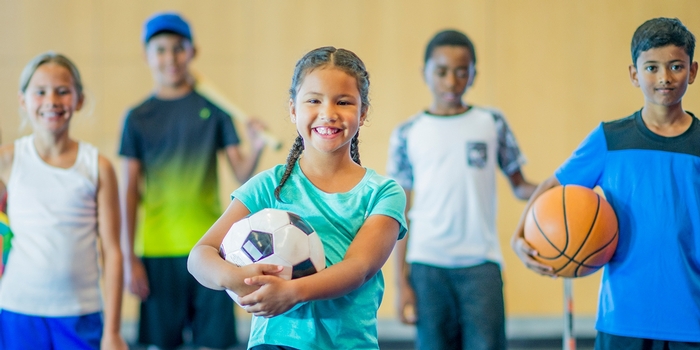Lenox Health Greenwich Village Expert Insights: Strategies for Preventing Youth Sports Injuries
September 3, 2019
By Michael Zacchilli, MD

Playing sports provides many well-known benefits to kids. In addition to promoting physical fitness, participation in sports can boost your child’s self-esteem, help build social skills and underscore the importance of goal-setting and practice.
Unfortunately, all sports have a risk of injury. Statistics show one in three children playing a team sport is injured seriously enough to miss practice or games.
Most sports injuries incurred by children are related to the skeletal and muscular systems of the body. As per the American Academy of Orthopaedic Surgeons, children’s bones, muscles, tendons and ligaments are still growing, which makes them more susceptible to injury.
- Acute injuries — Acute injuries include bruises, sprains, broken bones, torn ligaments and concussions. They are often related to improper warmup before sports, fatigue and previous injury.
- Overuse injuries — Overuse injuries include Little League elbow, swimmer's shoulder and shin splints. They happen in areas of the body that are used over and over again. Overuse injuries may be related to insufficient warmup, improper technique, or inadequate equipment as well.
- Re-injuries — Re-injuries are due to an athlete returning to play before a previous injury has healed.
Overuse injuries currently account for the majority of all time missed by athletes. The cumulative effects of repetitive motions without exercises/prevention can lead to cumulative damage over time. The Sports Medicine community has seen a resulting epidemic in over the last decade, which has been marked by significant increases in sports specialization in children under the age of 12 in the United States. As a result, prevention and appropriate management are more important now than ever. In an effort to provide parents, coaches and players with the tools to decrease these injuries, the American Academy of Orthopaedic Surgery has launched the OneSport Injury campaign.
For resources specific to your athlete or sport, visit: https://www.orthoinfo.org/onesportinjury.
- Always warm up before playing — Warmup exercises will increase blood flow to muscles, decreasing muscle stiffness and reducing risk of injury.
- Wear protective gear — Wearing appropriate and properly fitting protective equipment such as pads (neck, shoulder, elbow, chest, knee, shin), helmets, mouthpieces, face guards, protective cups, and eyewear is essential to injury prevention.
- Know how to correctly use athletic equipment — The coach or athletic trainer should provide clear instructions.
- Strengthen muscles — Conditioning exercises can help children achieve and maintain proper physical condition needed to play sports.
- Increase flexibility — Stretching exercises after games or practice can increase flexibility.
- Use the proper technique — The coach should teach and reinforce proper technique during the playing season.
- Take breaks — Rest periods during practice and games can reduce injuries and overheating.
- Play safe — Your child should know and abide by the rules of a sport.
- Resist playing through pain — If your child is in pain or not feeling well, he or she should tell the coach or another adult.
- Stay hydrated — Drinking plenty of fluids before, during and after play can prevent heat illness.
- Take time off — Your child should take at least one day off per week and at least one month off per year from training for a particular sport to allow the body to recover.
As a further precaution, meet with your child’s coach before the first practice to share any history of asthma or other medical conditions that may require special attention. Most importantly, make sure the coach has your emergency contact number.

An expert in orthopaedics, Michael Zacchilli, MD, specializes in orthopaedic surgery and sports medicine. To schedule an appointment with Dr. Zacchilli, at Lenox Health Greenwich Village, please call 646.741.5324.
